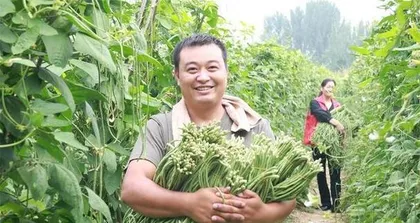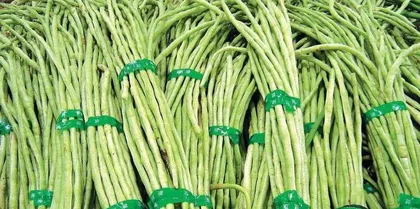Southern beans, also known as green beans, are a very popular vegetable in the southern regions of China. Southern beans grow rapidly and are favored by many farmers and gardening enthusiasts due to their suitable requirements for light, temperature, and humidity. So, in which month should Southern beans be planted? This article will introduce the best time to plant Southern beans and the precautions to take.

October is the best time for planting
In the southern regions, October is the best time to plant Southern beans. At this time, the temperature is suitable, there is plenty of sunlight, and the soil moisture is high, all of which are beneficial for the growth and germination of Southern beans.
April is also suitable for planting
If you miss the October planting time, April is also a suitable time for planting Southern beans. In April, the temperature is moderate, and there is sufficient light and humidity to ensure the normal growth of Southern beans.

Precautions for seedling cultivation
It is best to start with seedling cultivation for Southern beans. The following points should be noted: choose loose, well-draining soil, maintain appropriate humidity and temperature, and avoid direct sunlight.
Seed selection
The selection of Southern bean seeds is also very important. Choose healthy, full, and undamaged seeds. If the seeds are collected by yourself, they need to be treated with soaking and disinfection.
Sowing methods
There are many methods for sowing Southern beans, such as direct seeding, bottom seeding, and plug tray seeding. Different sowing methods should be chosen based on local climate, soil, and moisture factors.

Post-sowing management
After sowing Southern beans, timely watering and shading are required. When the plants grow to a certain height, timely pruning and staking are necessary to prevent lodging.
Soil care
Southern beans need adequate nutrition and water to grow. Adding appropriate amounts of organic fertilizers and phosphorus-potassium fertilizers to the soil can promote plant growth.
Pest and disease control
Southern beans are susceptible to various pests and diseases and require timely control measures. Common pests and diseases include aphids, powdery mildew, downy mildew, etc., which can be controlled with biological or chemical pesticides.
Harvesting time
The harvesting time for Southern beans is generally when the pods are full and have a bright color. The harvesting time varies for different varieties and should be chosen according to the variety and local climate.
Note on preservation
After harvesting, Southern beans need to be cleaned and dried in time, and stored in a cool, ventilated place to ensure their freshness and taste.
Make good use of pruning
Southern beans grow rapidly and can easily develop dense branches and leaves. Proper pruning can maintain the health of the plants and ensure good ventilation.
Companion planting with other plants
Companion planting Southern beans with other vegetables can improve soil utilization and promote interaction and resource sharing among different plants.
Long-term continuous cropping is not advisable
Southern beans should not be planted in the same place for long periods, as it can easily lead to soil fatigue and increased pests and diseases. Crop rotation and proper fertilization should be noted to maintain soil health and longevity.
Economic value
In addition to being nutritious and delicious, Southern beans also have high economic value. They can be used for various purposes such as vegetables, green manure, and feed.
Southern beans are a common vegetable in the southern regions. When planting, it is necessary to choose the right time and carry out seedling cultivation, sowing, maintenance, and pest control to ensure their growth and yield. At the same time, measures such as crop rotation and proper fertilization should be taken to ensure soil health and longevity.